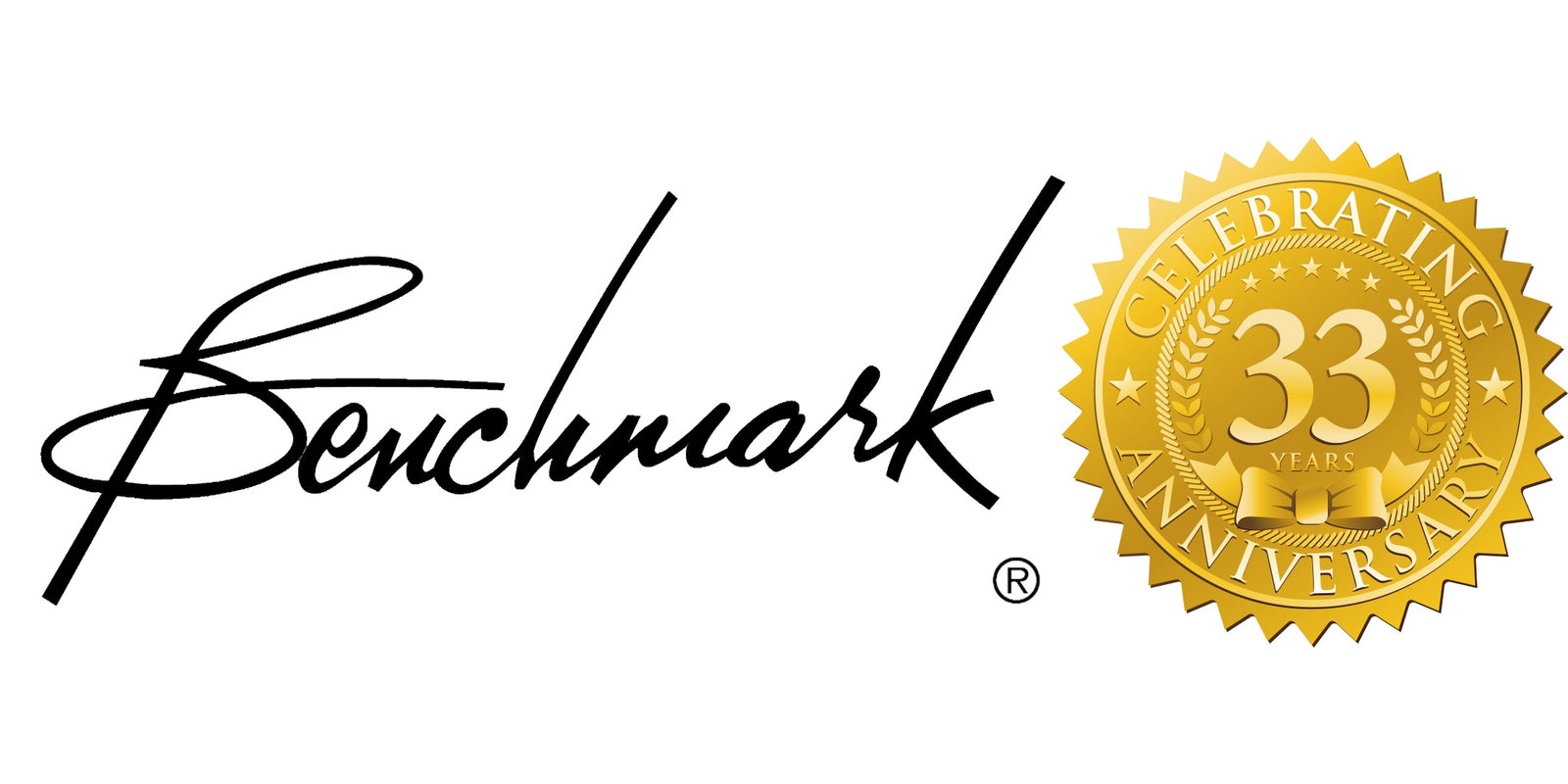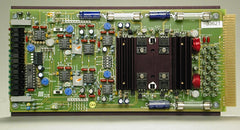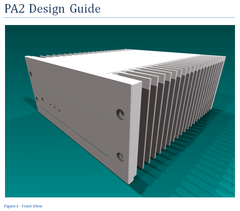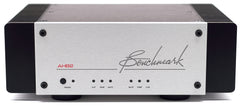Buy one component and save 10% on up to 2 cables. Buy 2 components and get 4 free cables. Free shipping on USA orders over $700. We are closed 12/25 and 12/26.
Buy one component and save 10% on up to 2 cables. Buy 2 components and get 4 free cables. Free shipping on USA orders over $700. We are closed 12/25 and 12/26.
History of the AHB2 Power Amplifier
by John Siau March 18, 2016

The AHB2 Power Amplifier was Introduced in 2016 on Benchmark's 33rd Anniversary. Here is the full story behind this award-winning amplifier:
The DA101 - Benchmark's First Power Amplifier

Over 33 years ago (in 1983), Benchmark's founder, Allen H. Burdick, began building analog audio distribution amplifiers for television networks. This specialized application demanded an audio power amplifier with very low noise, very low distortion, and a very wide frequency response. The Benchmark DA101 distribution amplifier had a 160 kHz bandwidth, THD+N of 0.00044%, and a SNR of 130 dB. The power output was about 40 watts in bridged mono. These amplifiers were designed to simultaneously drive 10 balanced audio lines while withstanding short circuits on as many as 1/3 of the 30-Ohm outputs. This requirement meant that the amplifiers needed to be capable of driving an 8-Ohm load. The DA101 distribution amplifiers were not intended for driving speakers. Nevertheless, they were capable of providing spectacular performance when driving 8-Ohm speakers. For many years, we used our DA101 distribution amplifiers to drive the speakers in our listening room. We couldn't buy an amplifier that came close to the performance of our distribution amplifiers, so we used them in all of our critical listening tests. Allen had often talked about building a bigger general-purpose power amplifier that could match the performance of the DA101.
The "PA1" Project
Allen retired in 2006 due to health issues, and in 2011 we began to talk about making Allen's dream for a power amp a reality. The goal was to meet or exceed the performance of Allen's DA101, while scaling up the power by a factor of 10. One obstacle was that push-pull crossover distortion can be hard to manage in a large amplifier. We began to look at unconventional solutions to this problem, and had a design code-named "PA1" in progress by June of 2011. It was to have a switched-mode power supply and a unique servo-biased push-pull output stage. We were going to have to think out of the box if we were going to reach our performance goals.
The THX Connection
In November of 2011, I was attending the AES conference and I ran into Laurie Fincham and Jayant Datta, some good friends from THX. We met for lunch and they began to tell me about a new amplifier topology that they were working on. They had applied for patents and were looking to turn their ideas into a product. This was the classic lunch with schematics and numbers scribbled on napkins. We realized that our two companies had complementary skills that could make a joint project a success. Their patents offered an elegant solution to the crossover-distortion problem and we were already planning to build an unconventional power amplifier with ground-breaking performance. By the time we finished lunch, we had outlined the performance requirements for the new amplifier. These specifications, written on a napkin in 2011, are almost identical to those of the production AHB2.
Much of 2012 was spent testing and improving low-power THX prototypes. The THX team was split between California, New York, Canada, and England. Benchmark's team was located at our headquarters in Syracuse, NY. It was an international effort tied together with email, Skype, air travel, and a common love for music and great audio.
The "PA2" Project

In November of 2012 we set the final specifications and code-named the project the "PA2" (Benchmark's second power amplifier - Power Amp #2, or PA2). The photo above is an early concept drawing. We soon completed the designs for the casework and custom transformers. We then began the final circuit designs for a full-power prototype.
The AHB2 Name

On September 27, 2013, everything was ready, but we still didn't have a name for the new amplifier. The faceplates were machined and finished but needed to be printed with the product name. I began thinking about the technology in the amplifier and how this could be incorporated into the name. The amplifier delivered class-A performance, had class-H tracking rails, and a class-AB output stage. It then struck me that the letters A, H, and B were Allen H. Burdick's initials. Instantly it was clear to me that the new amplifier should be named after the man who inspired it! At that moment, the PA2 became the AHB2. I announced the name to my staff, and we placed the order for the printing. Less than an hour later we got a phone call with the sad and shocking news that Allen had passed away. I am still stunned when I think about the coincidence of these two events.
First Working Unit
In October 2013 we demonstrated the first working AHB2 prototype at the AES show. We then completed a 20-unit pilot run in early 2014, and spent several months completing compliance and safety testing. By October of 2014 the first production run was nearly ready, and we hoped to take the very first unit to the 2014 AES show.
The First AHB2 Meets The First APx555
Through heroic efforts, the first production AHB2 was ready just in time for the 2014 AES show, where an amazing coincidence occurred. Through similarly heroic efforts, Audio Precision completed their first production APx555 audio test station just in time for the same show. This last-minute success was important for AP because they were planning to celebrate their 30th anniversary on the show floor. They invited us and our new AHB2 to their booth for their 30th anniversary celebration. Top engineers from Audio Precision, THX and Benchmark all gathered around the test station to see APx555 run tests on the AHB2. The group included Laurie Fincham, and Jayant Datta (THX), Bruce Hofer and Tom Kite (AP), and John Siau (Benchmark). Everyone was so impressed by what they saw, that the festivities faded into the background. The APx555 was the best audio test station we had ever seen, and the performance of the AHB2 was pushing the limits of the test station. It was hard to say who was the most excited.
- John Siau, March 17, 2016
Also in Audio Application Notes

How Loud is the Distortion from Your Power Amplifier?
by John Siau August 08, 2025
Would you put a Washing Machine in your Listening Room?
If the answer is no, you may be surprised to discover that the distortion produced by your power amplifier may be louder than the noise produced by a major appliance.
Don't believe me? Take a look at Stereophile's test reports:
We selected 7 power amplifiers from Stereophile's top list of recommended amplifiers.
We took Stereophile's "THD+N vs. Power" plots for each, and replotted the data in a format that shows the loudness of the THD+N at the listening position.
The results are shocking!
Amplifier THD+N is louder than expected!
The distortion from your amplifier may be louder than a washing machine on the spin cycle, or it may be totally silent. How does yours perform? The answer is hidden in Stereophile's THD+N plots.
This application note reveals the hidden truth:
"The Distortion from your Power Amplifier may be Louder than a Washing Machine!"
I know, it sounds crazy, but this is what the measurements show!

Interpolator Overload Distortion
by John Siau November 20, 2024
Most digital playback devices include digital interpolators. These interpolators increase the sample rate of the incoming audio to improve the performance of the playback system. Interpolators are essential in oversampled sigma-delta D/A converters, and in sample rate converters. In general, interpolators have vastly improved the performance of audio D/A converters by eliminating the need for analog brick wall filters. Nevertheless, digital interpolators have brick wall digital filters that can produce unique distortion signatures when they are overloaded.
10% Distortion
An interpolator that performs wonderfully when tested with standard test tones, may overload severely when playing the inter-sample musical peaks that are captured on a typical CD. In our tests, we observed THD+N levels exceeding 10% while interpolator overloads were occurring. The highest levels were produced by devices that included ASRC sample rate converters.

Audiophile Snake Oil
by John Siau April 05, 2024
The Audiophile Wild West
Audiophiles live in the wild west. $495 will buy an "audiophile fuse" to replace the $1 generic fuse that came in your audio amplifier. $10,000 will buy a set of "audiophile speaker cables" to replace the $20 wires you purchased at the local hardware store. We are told that these $10,000 cables can be improved if we add a set of $300 "cable elevators" to dampen vibrations. You didn't even know that you needed elevators! And let's not forget to budget at least $200 for each of the "isolation platforms" we will need under our electronic components. Furthermore, it seems that any so-called "audiophile power cord" that costs less than $100, does not belong in a high-end system. And, if cost is no object, there are premium versions of each that can be purchased by the most discerning customers. A top-of-the line power cord could run $5000. One magazine claims that "the majority of listeners were able to hear the difference between a $5 power cable and a $5,000 power cord". Can you hear the difference? If not, are you really an audiophile?





